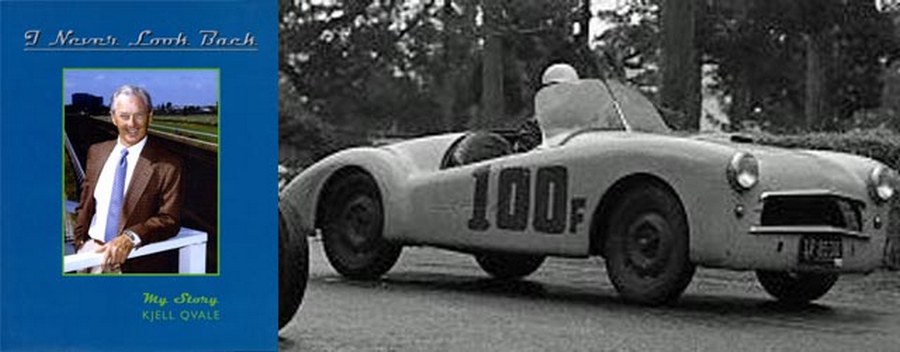
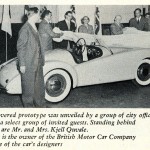
Here The Caption Reads, “The covered prototype was unveiled by a group of city officials before a select group of invited guests. Standing behind the car are Mr. and Mrs. Kjell Qvale. Qvale is the owner of the British Motor Car Company and one of the car’s designers.”
Hi Gang…
Checkout the first photo posted in our story.
It shows the unveiling of the new fiberglass sports car built and designed by Kjell Qvale (pronounced “shell” (Kjell) “ka-vah’-lay” (Qvale)) back in 1952. If you look carefully at the photo, you’ll see Kjell and his wife beaming with pride as his prototype BMC Singer is revealed to the public by a group of city officials.
Those were the days, gang, when anything seemed possible. And Kjell was just the man to do it.
Kjell Qvale’s Background
I first introduced you to Kjell Qvale in our previous story on the BMC as reported in Auto Speed and Sport in August 1952. (Click here to review the first story on the BMC Singer Sports Car). First, let’s talk a bit about Kjell Qvale the man.
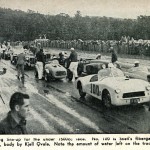
Here’s A Photo Of Pete Snell’s BMC Singer Sports Car / Race Car In The Starting Line Up at Pebble Beach In April 1953.
This year, 2011, Kjell will be 92 years old and going strong. I interviewed him in 2010 – he had just returned from a vacation in Bermuda and was getting over a cold. I think he’s in better shape than me! One impressive guy. Here’s some of what he posted about himself on his Internet blog (http://kjellqvale.wordpress.com/):
“ Kjell Qvale was born in the quaint seaside city of Trondheim, Norway, on July 17, 1919. His father, Bjarne, a sea captain, was relocated to Buenos Aires, Argentina. For several years of his life, Kjell lived separately from his father, remaining in Norway with his sister, mother, and grandparents.
Bjarne Qvale commanded a freighter ship that travelled between Valparaiso, Chile, and Seattle Washington, which resulted in his discovering the beauty of the Pacific Northwest. After being forced to live apart from his family for more than a year, Kjell’s father decided to reunite them and settle on the Pacific Coast, which reminded him of his Norwegian homeland.
In 1929, Kjell left his home in Trondheim, Norway, and moved to America, where he has lived ever since. It was winter and Kjell was only 10 years old when he crossed the Atlantic with his mother, Signe, and his four siblings, Ragnar, Knute, Bjarne, and Eva. The ship carrying the family of six landed in Halifax, Nova Scotia. From there, they boarded a train that transported them across Canada.
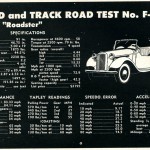
Here Are Technical Specifications Of The Singer 1500 Roadster As Discussed In Road & Track, July 1953
While the bitter cold winter was nothing new for the Norwegian family, they had the joy of being introduced to bananas on their Canadian train trip. Having travelled nearly 4,000 miles, they finally arrived in Vancouver, where their father awaited them.
Together at last, they embarked for their new home in Yakima, Washington, where Bjarne had acquired a fish market. A young boy, who had never left Norway, Kjell entered school his first week after arriving in America, equipped with an English vocabulary that consisted of little more than a few words acquired from films. A quick study, however, Kjell caught up with his classmates and even learned to play American games like Baseball.”
What an interesting background for one of our fiberglass founders of the 50’s. You can learn a bit more about Kjell on the following websites:
http://kjellqvale.wordpress.com/
http://bigsight.org/kjell_qvale
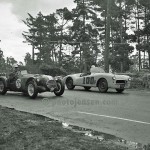
Here’s Pete Snell Racing The BMC Singer At Pebble Beach In April 1953. (Photo From Collection of Eric Jensen)
http://www.naymz.com/kjell_qvale_2949892
http://www.xing.com/profile/Kjell_Qvale
Researching Kjell Qvale’s British Motor Company (BMC):
Kjell is best known for founding – and still operating – the “British Motor Car” Company of San Francisco, California. His company is often referenced as “BMC.” You can view the website for his company by clicking on this link. He opened his first automotive dealership in 1946 with an $8500 investment and began selling Willys Jeeps. Within a year, he had decided to sell his Jeep business and become a distributor for MG’s. This is really early gang – 1947 – and that’s the year he founded the BMC Company of San Francisco.
In his autobiography “I Never Look Back” published in 2005, Kjell relates the story on how he switched gears from a Willys to an MG dealer in 1947:
“One day in late 1946, my mechanic came to me and said, “The British are importing a small motorcycle that is really inexpensive.” It was called a “James” and the importer was in New Orleans. My mechanic thought I could sell some, so I asked him for the name of the importer and took off for New Orleans. It was obvious that the franchise I had selling only Willys’ products was going to be difficult; I needed something else to contribute to the business.
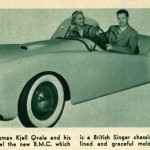
From Road & Track, September 1952. Here The Caption Reads, “San Francisco sportsman Kjell Qvaleand his attractive wife model the new BMC which is a British Singer chassis carrying a streamlined and graceful molded fiberglass body.”
Two days later I was standing on a corner in New Orleans wasting a little time before my appointment. All of a sudden a cute little car pulled up. I had never seen anything like it and I was fascinated. The driver got out and I asked him where it was from. “Made in England,” he informed me. It turned out that the driver was the son of the man I had come to see and they were importing the MG – and looking for distributors. This turned out to be the most significant moment of my life. It was the beginning of everything I would do over the next fifty-eight years.
An hour or two with his father, and I was the distributor for Northern California. We had no written agreement. Fortunately, they didn’t ask me if I had any money, experience, or the premises. Things were a little different then; in fact, you could say they were primitive.”
I placed my order for six cars, plus one that they would supply through a current dealer in Los Angeles. The six cars were shipped to me by rail and arrived in less than perfect shape. They hadn’t been properly tied down, and since they had no bumpers, they had some minor damage. The sales price was $2395 and, in no time, we had sold all six cars to people around the Bay Area. We did no advertising and I have no idea how they found out I had them.”
For those of you more interested in Kjell Qvale’s life, click here to view his book for sale on Amazon.com
Recalling The BMC Prototype Fiberglass Bodied Sports Car:
Kjell talked a bit about his fiberglass car in his 2005 autobiography. Here’s what he had to say:
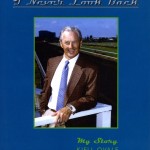
Kjell Qvale Published His Autobiography Titled, “I Never Look Back” in 2005. If You Love The History Of Sports Cars On The West Coast – You”ll Love His Book.
“In 1952, a group of friends and I decided to have some fun and build our own car. The idea was to create a somewhat universal body that could fit on a variety of chassis, but we mainly had the MG in mind. The body would be produced so it could be fitted to a chassis without any modifications and permit a relatively easy installation.
We decided to make the body out of fiberglass because it was light and could be easily repaired if it was ever damaged. For our first effort, we chose to use a Singer 1500 as the chassis. We made the fiberglass body in my garage.
I remember Matty Matlock, a friend from high school and my auto sales manager, stepped in some resin and then onto a piece of fiberglass. It looked like a cartoon as he tried to use one shoe to get the fiberglass off the other, only to have it stick to the second shoe. He hopped around like this for several minutes and had us all laughing so hard we were almost in tears.
We finished the body – without a trunk or doors – and mounted it on the Singer chassis. It actually turned out very nice. It was an open, two-seat sports car with a split, two-piece windshield. The plan was to add a trunk and one entry door if the car went into production. We decided to call it the BMC Prototype and previewed it to a group of invited guests on the eve of the first sports car road races through San Francisco’s Golden Gate Park in May 1952.
Although it received some nice publicity we realized it was not going to be a practical or profitable venture, but it was an interesting project. As I recall, the one and only BMC Prototype was sold to an SCCA racer by the name of Pete Snell, who raced the car in local events. If the name sounds familiar it is because the Snell Memorial Foundation is the organization that established testing standards for crash helmets and continues to certify helmets to this day. The foundation was established in Pete Snell’s name after he was fatally injured in 1956 while racing a Triumph sports car in an SCCA event.”
Interview With Kjell in 2010
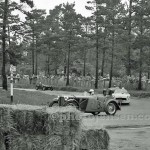
Here’s Another Shot Of The Singer At Pebble Beach, April 1953 – Just “Peeking” Around The Corner. (Photo From Collection of Eric Jensen)
I had a chance to speak with him on January 7th, 2010 to reminisce about his cars. Kjell had a few points to add to our story as follows:
- BMC only made one or two bodies – and one of those was his prototype car that debuted in May 1952.
- The project lasted less than a year.
- He doesn’t remember bringing his prototype to any shows of the era (for example, the Oakland Roadster Show)
- Several people were involved in creating and building the car. Two to three people were involved with laying up the body for the car.
- Kjell didn’t keep the car very long. After they determined that the process of creating a body and mounting it on a chassis was too involved for their business to sustain, they sold the BMC Prototype (in the previous article on BMC, Jim Cuevas thought the car was sold from BMC’s used car operation in Walnut Creek, California).
- Kjell remembered at that time, an MG cost $1750 and lamented – “how could we build something and compete with it at that price?” It was a great idea, but it didn’t make sense for BMC to continue supporting the project.
At the end of the interview, Kjell reminded me that they were a tiny company back then, and they didn’t have the money or resources to take on a project this big. As we’ve come to learn over the years here at “Forgotten Fiberglass,” building fiberglass cars in the 1950’s was not for the faint of heart. It took time, money, labor, and resources to design, create a buck, take a mold, create a body, store the body, and build a car. Articles of the time made it seem easier than it was – and that’s what Kjell Qvale also learned back in 1952.
Racing The BMC Fiberglass Sports Car:
The BMC Sports Car made one appearance, as far as we can tell, about a year after it was built. A short mention and photo of it appeared in the July 1953 issue of Road & Track when it appeared in the April 19th, 1953 Pebble Beach Road Race The caption is short and mentions the following about the BMC:
“Starting line-up for the under 1500cc race. No. 100 is (Pete) Snell’s fiberglass Singer, body by Kjell Qvale.”
In researching the final results of the race, Snell didn’t finish in one of the top five places, but it appears he may have completed the race.
Summary:
Kjell mentions in his autobiography that the BMC Singer fiberglass body “was the only one we made.” He was partially right. It was the only complete sports car he ever made. However, fiberglass friend Dan Nichols was on the prowl back in 1953 and uncovered – and photographed – another BMC Singer owned by Vern Gardner of Oakland California. He tracked it from the chassis being built to the car being raced at Moffit Field in 1953. More about Vern’s BMC Singer in an upcoming story.
Hope you enjoyed the story, and until next time…
Glass on gang…
Geoff
——————————————————————–
Click on the Images Below to View Larger Pictures
——————————————————————-
- adfasf
- Here’s Snell Racing The BMC Singer At Pebble Beach In April 1953
- Here’s Another Shot Of The Singer At Pebble Beach, April 1953 – Just “Peeking” Around The Corner. (Photo From Collection of Eric Jensen)
- Kjell Qvale Published His Autobiography Titled, “I Never Look Back” in 2005. If You Love The History Of Sports Cars On The West Coast – You”ll Love His Book.
- 234
- asdad
- From Road & Track, September 1952. Here The Caption Reads, “San Francisco sportsman Kjell Qvale and his attractive wife model the new BMC which is a British Singer chassis carrying a streamlined and graceful molded fiberglass body.”

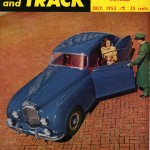
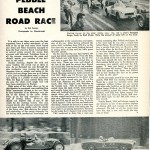
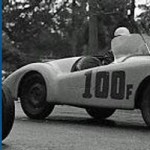
My father, Buzz Hodges, did the organizing and P.R. for the 1953 British Motor’s road race in Golden Gate Park. I was taken to the events and parties at the Fairmont Hotel leading up to the race with my parents, knew Kjell Qvale and J.P. Khan, (who worked at the race), and grew up in British motor cars in the late ’40’s into the early ’60’s. It’s fun finding information on the Internet about that period. My father worked for Guild, Bascom, and Bonfigili in S.F. in the ’50’s, finally leaving the advertising world in the early 1960’s.